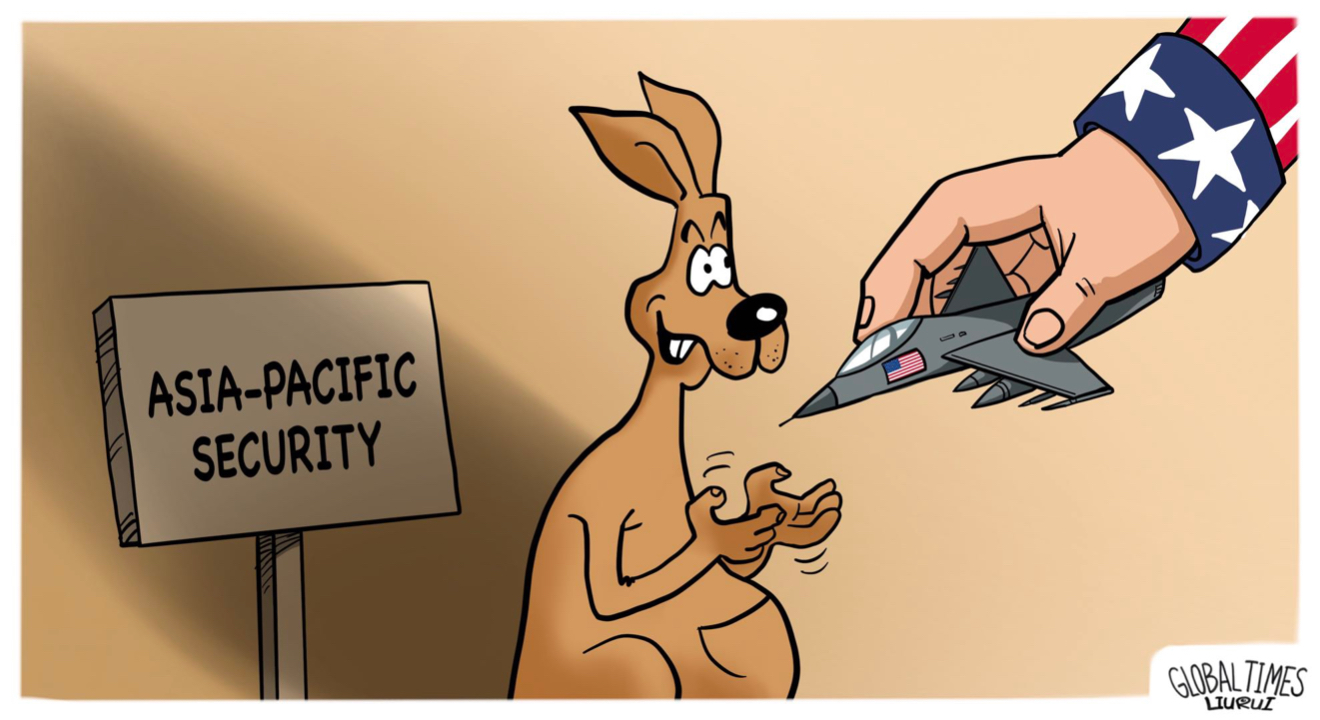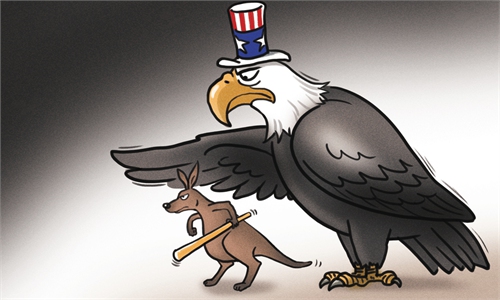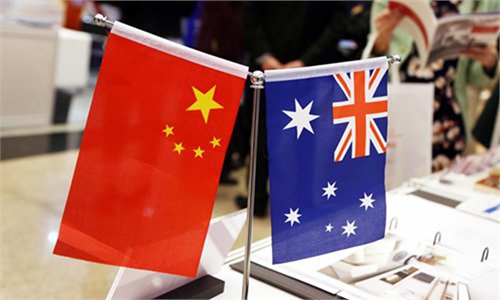Troop rotations among US and allies expose hazardous nature of US-centered cliques

Dangerous game. Illustration: Liu Rui/GT
The US is trying to make its allies pillars of its “Indo-Pacific Strategy.” With the strengthening of the cooperation among the US, Australia and Japan, the US hopes to build a military triangle in the region to consolidate its dominant role and form more consensus in China-related affairs. This exposes the hazardous nature of the US-centered cliques.After talks between US and Australian foreign and defense chiefs in Washington on Tuesday, the two sides agreed to step up troop rotations and that the US will expand the number of the bomber task force and fighter aircraft forces in Australia. They will also invite Japan into the three-way rotations, vowing a united front in the face of “China’s dangerous and coercive actions throughout the Indo-Pacific, including around Taiwan.”
The three-way rotations of troops are a new tactic under US’ “Indo-Pacific Strategy.” Song Zhongping, a Chinese military expert, believes that the US is expanding its frontline military bases and seeking to integrate the first island chain with the second island chain.
In late October, it was reported that the US would send six nuclear-capable B-52 bombers to an air base in northern Australia. In November 2021, the US Defense Department’s Global Posture Review called for building up bases in Guam and Australia to prepare the US military better to counter China.
“On the one hand, US’ first island chain strategy cannot sustain its strategic intentions, so the US wants to avoid suffering huge losses by not deploying all of its forces there. On the other hand, it eyes for building frontline military bases in areas like Australia and Guam,” Song told the Global Times.
Japan and Australia are both US’ important allies. They can assist the US from two different directions. The US hopes that Japan can play its role in Western Pacific, including the South China Sea, and Australia can focus on the South China Sea and the Indian Ocean. Such assignment of tasks is part of the US’ “Indo-Pacific Strategy” – containing China from both its east and south.
Song said that inviting Japan to the US-Australia troop rotations is one important step in US’ plan to drag Japan into AUKUS, and the next may well be Canada. Zhang Tengjun, deputy director of the Department for Asia-Pacific Studies at the China Institute of International Studies, told the Global Times that such cooperation aims at creating an “Indo-Pacific” version of NATO, the ultimate goal of which is to serve the US global hegemony.
For a long time, Australia and Japan have had no independent foreign policy. Their foreign policy is only part of the US policy. They practice US strategy, which means they are tied to US’ anti-China chariot and oftentimes serve US interests at the cost of their own. In the foreseeable future, China will continue to be the main economic partner of Australia and Japan. Not having a conflict with China fits their interests. What Australia and Japan are doing is turning themselves into Washington’s “strategic assets.” Will it make them more secure or less secure? The answer is obvious. Once a conflict occurs, the US could hijack its allies by making them involved in the conflict and shoulder more defense responsibilities, while it can exercise flexibility.
Zhang said that the US is the reason for the current tensions in the Taiwan Straits. In August, US House Speaker Nancy Pelosi paid a provocative visit to Taiwan island regardless of China’s warnings, which triggered strong reactions from China. The US is calling black white by hyping China’s “dangerous and coercive actions,” and the real intention is to reinforce its “Indo-Pacific Strategy” and contain China.
US President Joe Biden made the commitment that his country respects China’s system, and does not seek to change it; does not seek a new Cold War; does not seek to revitalize alliances against China; does not support “Taiwan independence”; does not support “two Chinas” or “one China, one Taiwan”; and has no intention to have a conflict with China. Obviously, some officials in his administration did not fully and effectively implement these commitments. This, however, will jeopardize the next phase of engagement between China and the US and squeeze the room for improvement of bilateral ties, said Zhang.


